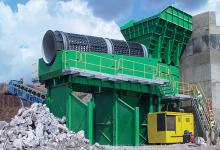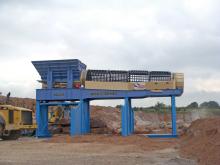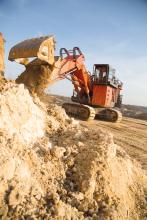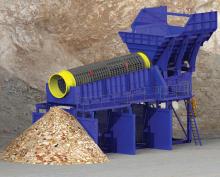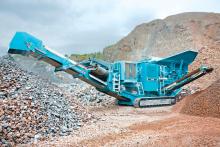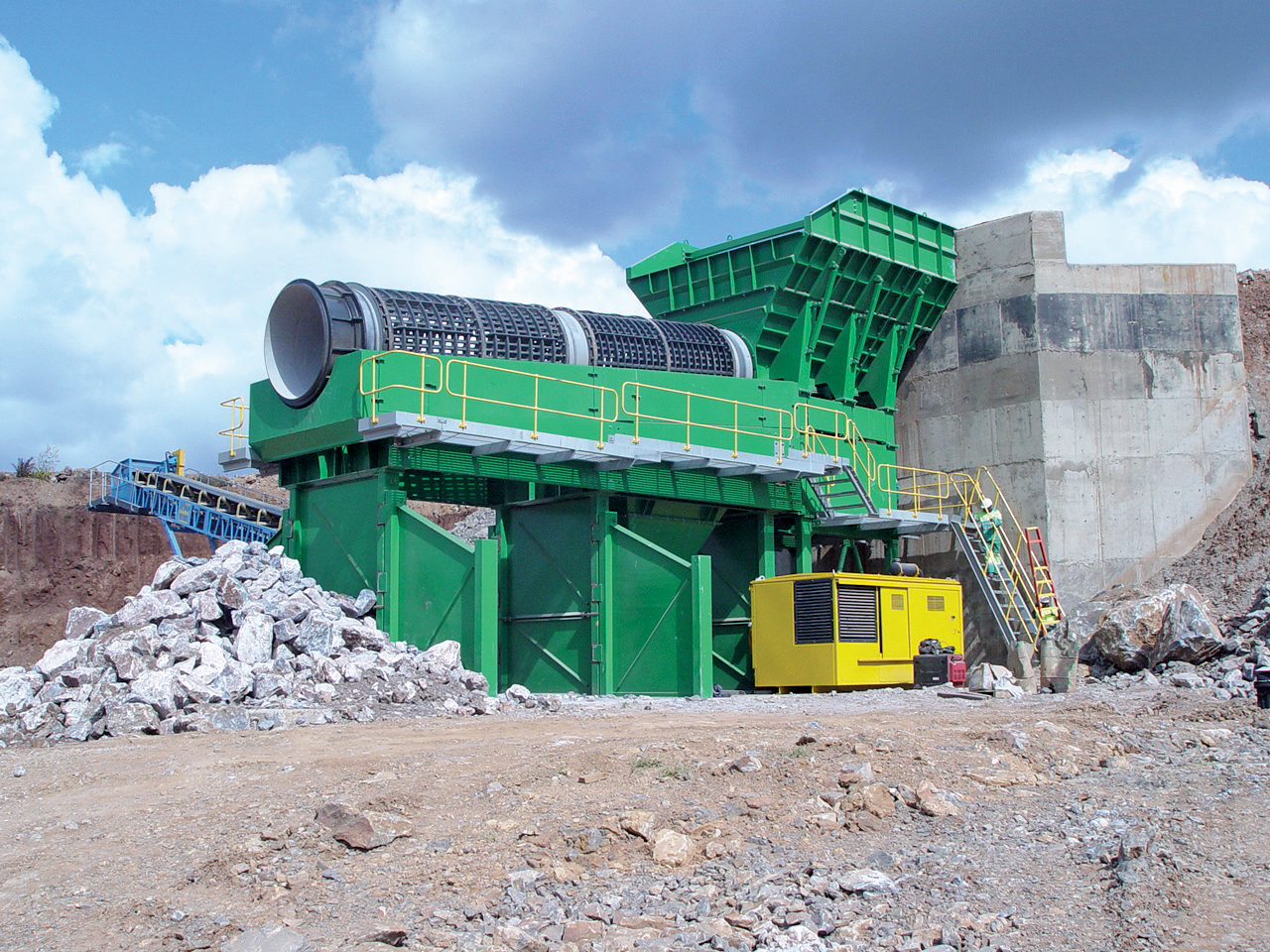
Stelex, which says it is the sole supplier of the original
In Tanzania, tipping contaminated limestone was the only option for the site since it was built around 30 years ago. The waste stockpiles amassed some 3 million tonnes.
The feed material is 60% limestone, 40% red clay/soil with a high moisture content during the rainy season of 25%. Lump sizes of up to 1m³ were expected.
While the recovery of the limestone was important, there was also a need for the red clay/soil elsewhere in the plant.
The successful project was achieved with the supply of a 500tonnes/hour rated HT182 heavy-duty trommel mounted on concrete walls with an under-screen feeder and 50m long stockpile conveyor. Based on the feed material a barrel design was recommended by Stelex and agreed by the customer that would maximise the customer’s product requirements.
The customer is continuing to work his tip along with further contamination at the quarry face for many years to come.
A huge stockpile was generated over many years at the site in Zambia, which contained a large amount of good quality stone.
Again, lump sizes of up to 1m³ were expected and the clay content in the material was seen to be very sticky with a tendency to ‘ball’ together when wet.
A barrel set-up was agreed with the customer that would achieve their clean–up requirements while also dealing with the difficult sticky clay during the wettest weather periods.
Another HT182 trommel was supplied to complete the project. It was mounted on a steel under-frame together with a collecting hopper and stockpile conveyor to deal with the rejected clay and fines material.
The clean material is collected from the trommel via loading shovels and as electricity was not available at the trommel site, a self-sufficient diesel powerpack was supplied.
The trommel will continue to work the existing waste material while also processing any future contaminated blasted stone.
“Both customers are aware of the sustainability of their respective quarries and the Hercules trommels are helping to accomplish their aims for many years to come,” says Stelex.


